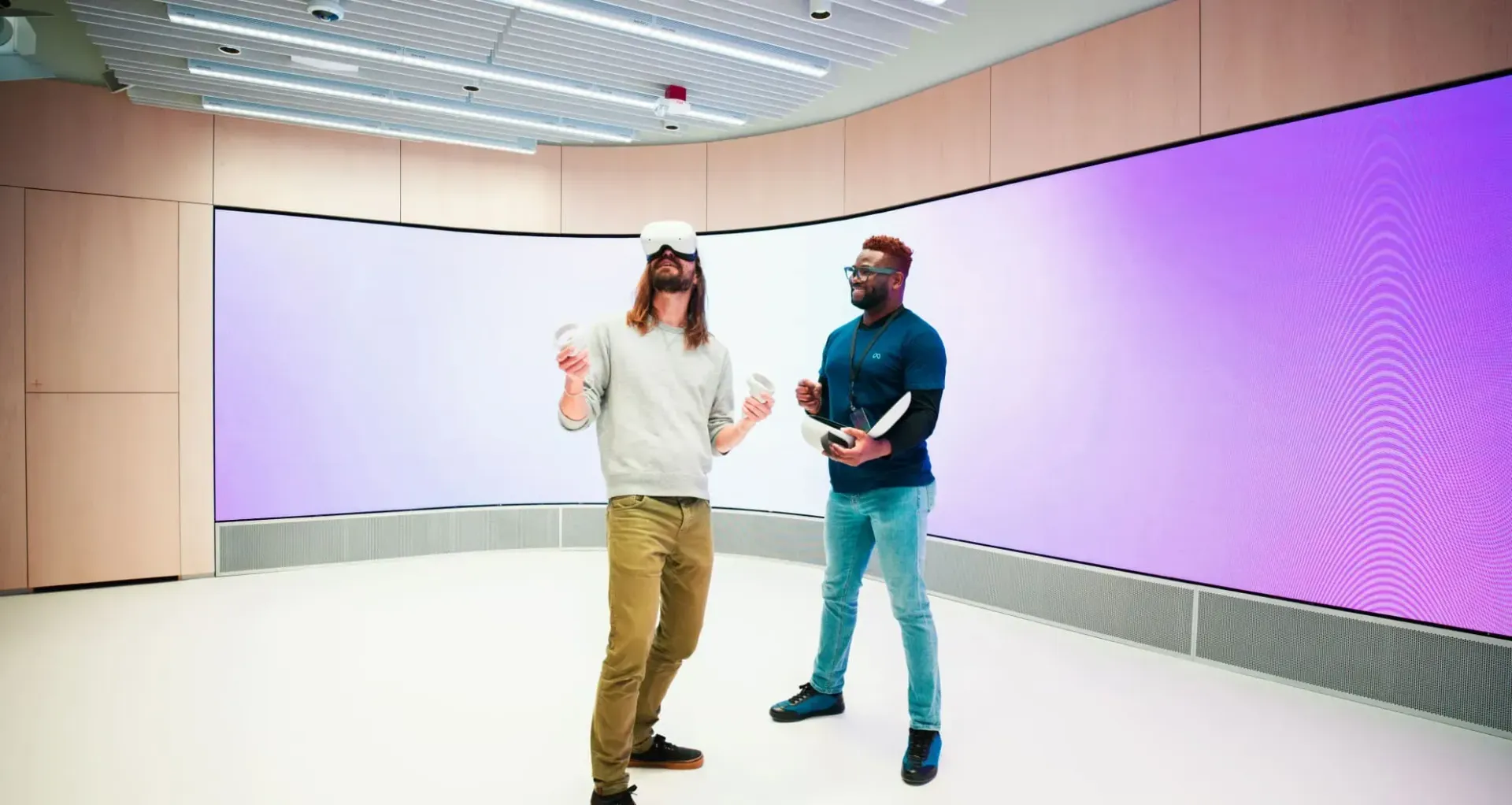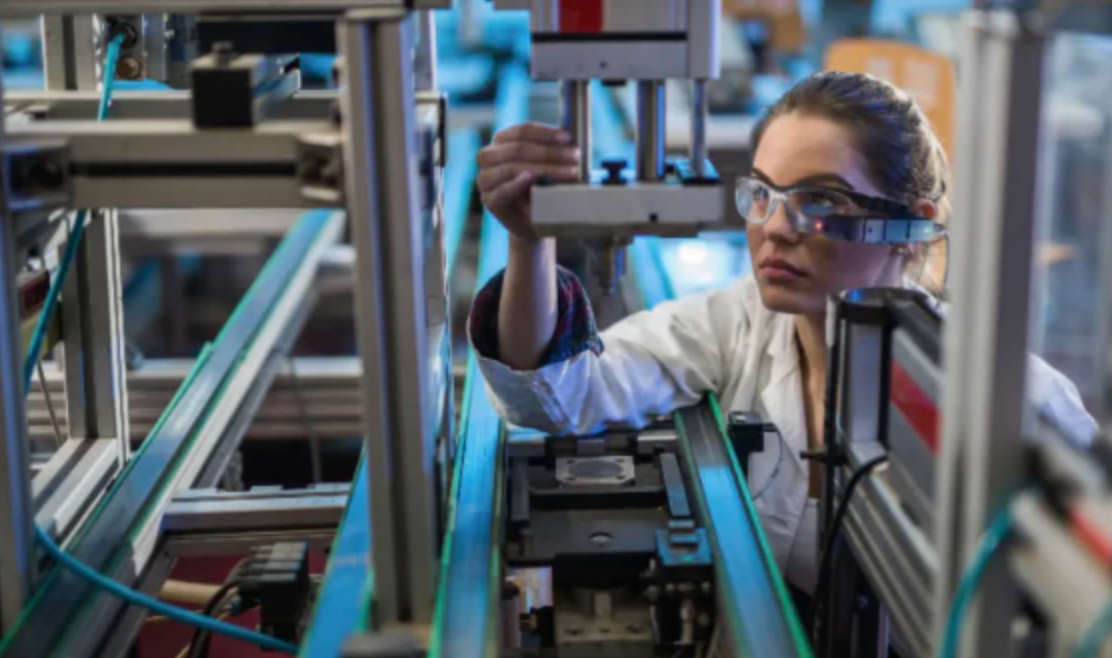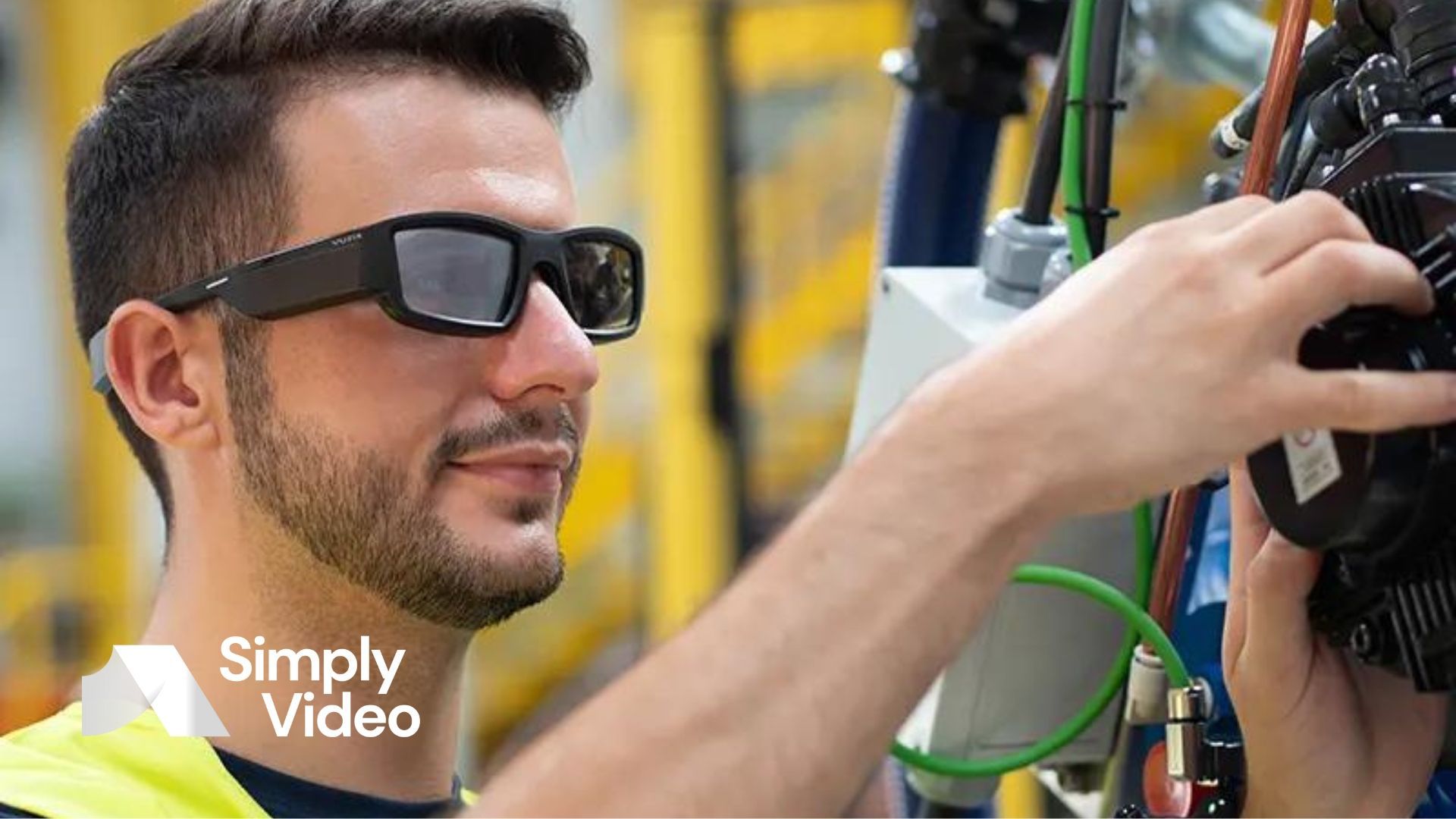A short history of interactive learning
Could augmented reality (AR) be the next stage in the development of interactive learning? Here at SimplyVideo, we believe so. Learn more in our article.
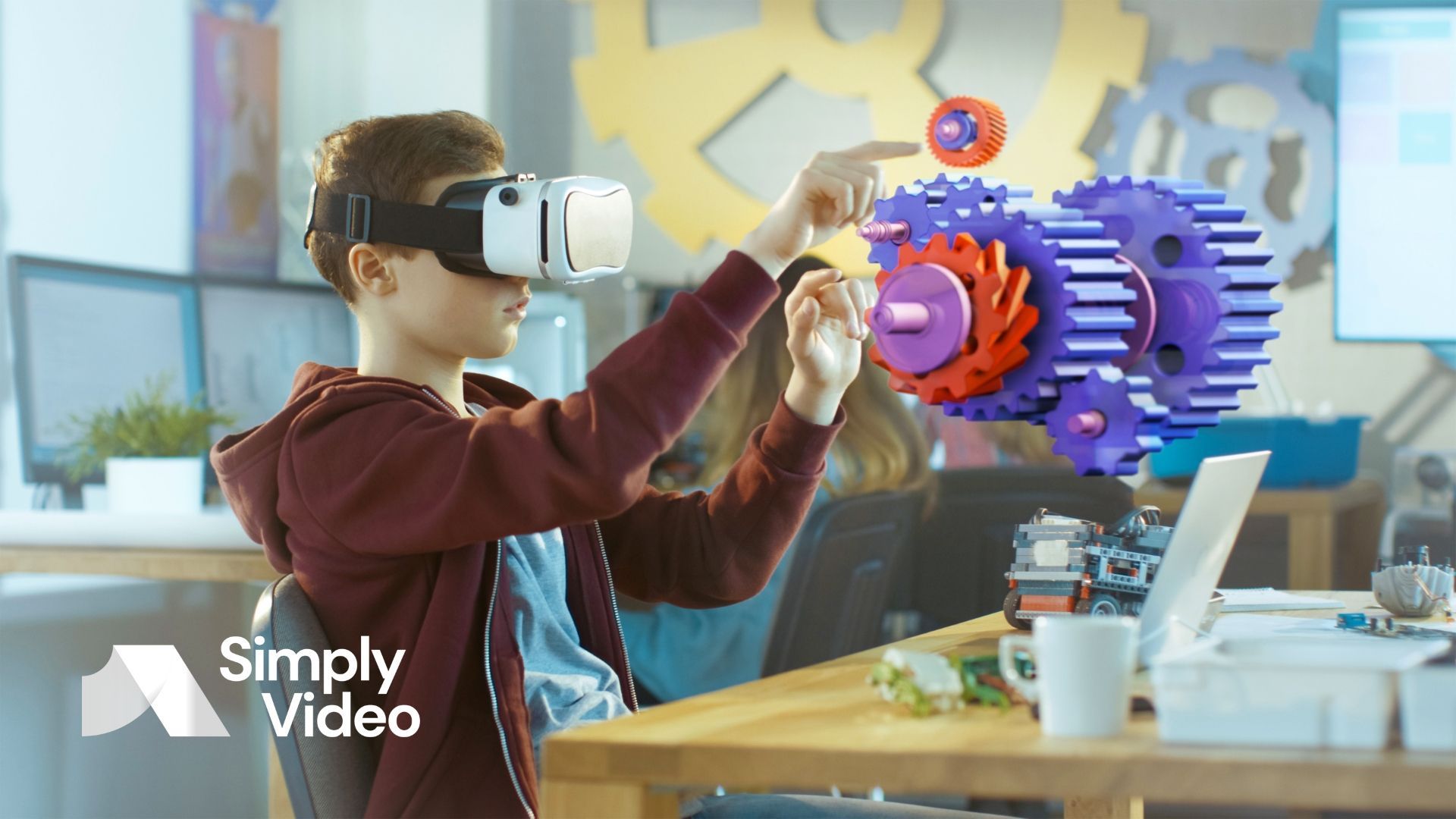
Interactive learning is nothing new – from the first distance learning courses in the 1870s to programmes like Open University, educators have long been looking for new ways to engage students and enhance learning.
Now, at the start of the 2020s, there's a new player on the scene: augmented reality (AR).
Here at SimplyVideo, we're embracing these changes with our own educational toolkit called
Stage. It's an AR platform that allows teachers to guide students through interactive and immersive virtual worlds.
But before we tell you just what it can do for your class – and your staff room – let's take a quick look around the backroads of interactive learning. Where did it all begin?
Part I: before computing
Interactive learning began with what were known as correspondence schools. In 1874, the first correspondence school opened in New York City. Early programmes targeted school teachers and seminarians (an industry which still thrives via mail-in courses to this day).

In 1877, Thomas Edison invented a device that could record audio, which then led his company to develop what were known as "language labs". The first of these was released in 1891. It was exactly what it sounds like – a mail-order record that taught the user a different language.
The idea of learning through audio caught on like wildfire, and this led to the aforementioned radio programs which offered courses on various subjects.
Then, in 1953, the University of Houston stepped it up a notch and began offering courses through public access television.
Programmes like Edison's lasted until the early 2000s, with one of the most popular examples being Rosetta Stone. This was a collection of CD-ROMs which installed software on your computer including interactive activities and lessons on foreign languages.
Part II: computers change everything
The University of Phoenix started offering online courses in 1989. This led to an explosion in online learning through the early 90s which continues to this day.
As more and more of the world's population gains access to personal computing, mail-order correspondence courses and language kits have all but been replaced by online certification programs and websites like
Duolingo.

Today, it's estimated that one in four students will attend at least one online course in pursuit of higher education during the process of attaining a degree.
The format of online learning hasn't changed much since 1989. Most courses, even today, have three major components: video lectures, bulletin boards for discussion and drop boxes for assignments.
The companies and software that enable these technologies have ebbed over the years, with different names and bandwidths, but the overall online experience is the same.
That's except for one significant change, which began around 2015.
Part III: videoconferencing changes the game
In 2015,
Discord launched a piece of videoconferencing software that had been hitherto unrivalled in the video chat era.
Video chat itself had been around for a long time, using webcams for things like Skype (or posting videos to websites a la
iCarly). But Discord created a server that could run a meeting with multiple users.
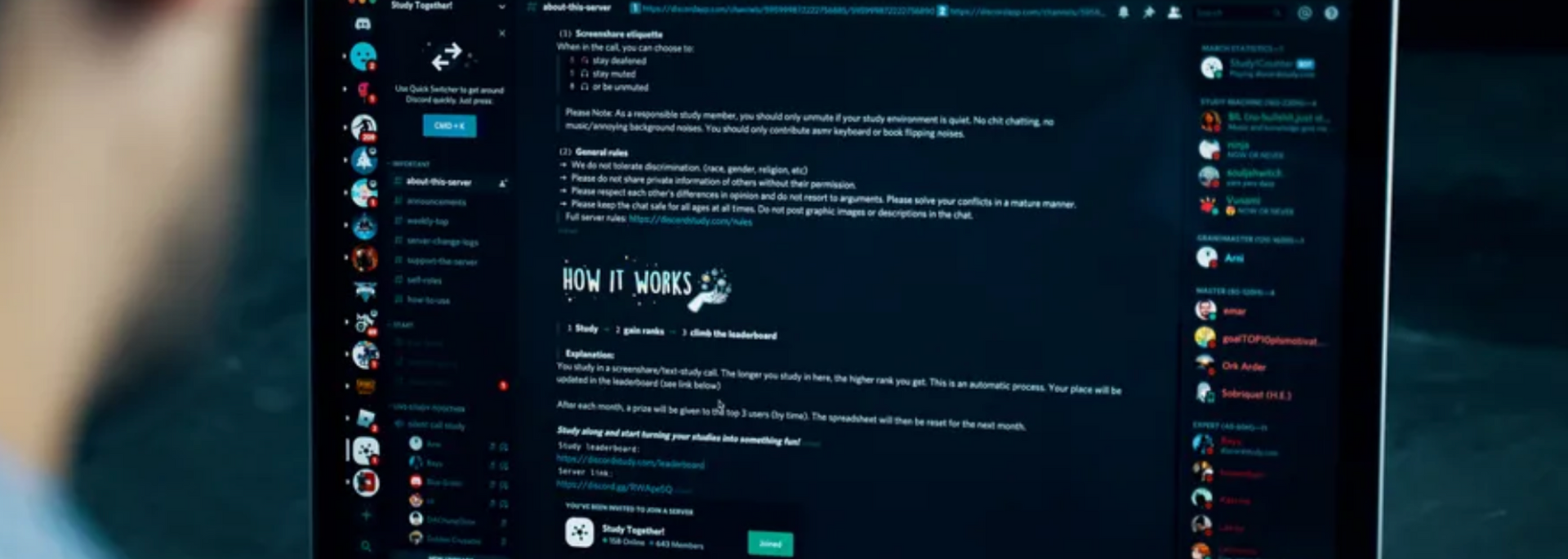
A few years later, in 2017, Google launched a similar service called Google Hangouts. These kinds of software began a revolution in the classroom – virtual spaces that could all but simulate the experience of being in a room with others.
Finally, we get to Zoom. While Discord and Google Hangouts were great for chats with small groups of people, Zoom allowed not only for hundreds of users to be on the same call, but also gave a great deal of control to the moderator.
This format was (and is) ideal for classrooms that need a teacher to stimulate discussion and get students to interact in a constructive manner.
Part IV: setting the stage for the future
To really take online learning to the next level, a company or institution would need to create an entire curriculum of interactive experiences, which could be mediated in-person or through a virtual classroom environment.
This kind of environment would incorporate online media and AR – and it would create the kind of space that allows students to feel at home, while also immersed in new and exciting experiences.

Fortunately for many educators, we here at SimplyVideo have done just that.
Stage is an educational AR toolkit which enables teachers to transform their classrooms into versatile, immersive virtual worlds.
For those not in the know: AR is a system which allows users to see projections overlaid onto real images which can then be manipulated.
Educators have been crying out for this kind of technology for decades, as it allows students to perform tasks that have previously been prohibitively expensive.
Whether it's looking inside the chambers of a still-beating heart, or watching a nuclear reactor react to the use of control rods, AR platforms like Stage can create vivid virtual learning environments.
Together with videoconferencing and other new technologies, AR is the future of interactive learning.
It's difficult to replace the experience of being in a classroom with other students, but a true immersive experience allows not only the next best thing, but also a valuable supplement to the in-person environment.
Conclusion
For over 150 years, better and better learning tools have been made increasingly available to those who've previously never had access to them.
This tradition continues to this day, with AR learning platforms creating new opportunities for learners worldwide.
Technologies like
Stage and other immersive educational tools will usher in a new era of interactive learning.
Company training, college coursework and even primary education will reap the benefits as more and more people invest in the futures of others. Because as humans learn and grow,
their realities become augmented as well.
Want to find out more about Stage, our
virtual learning platform? Don't hesitate to
get in touch
with one of our AR experts.
